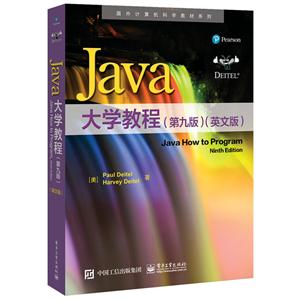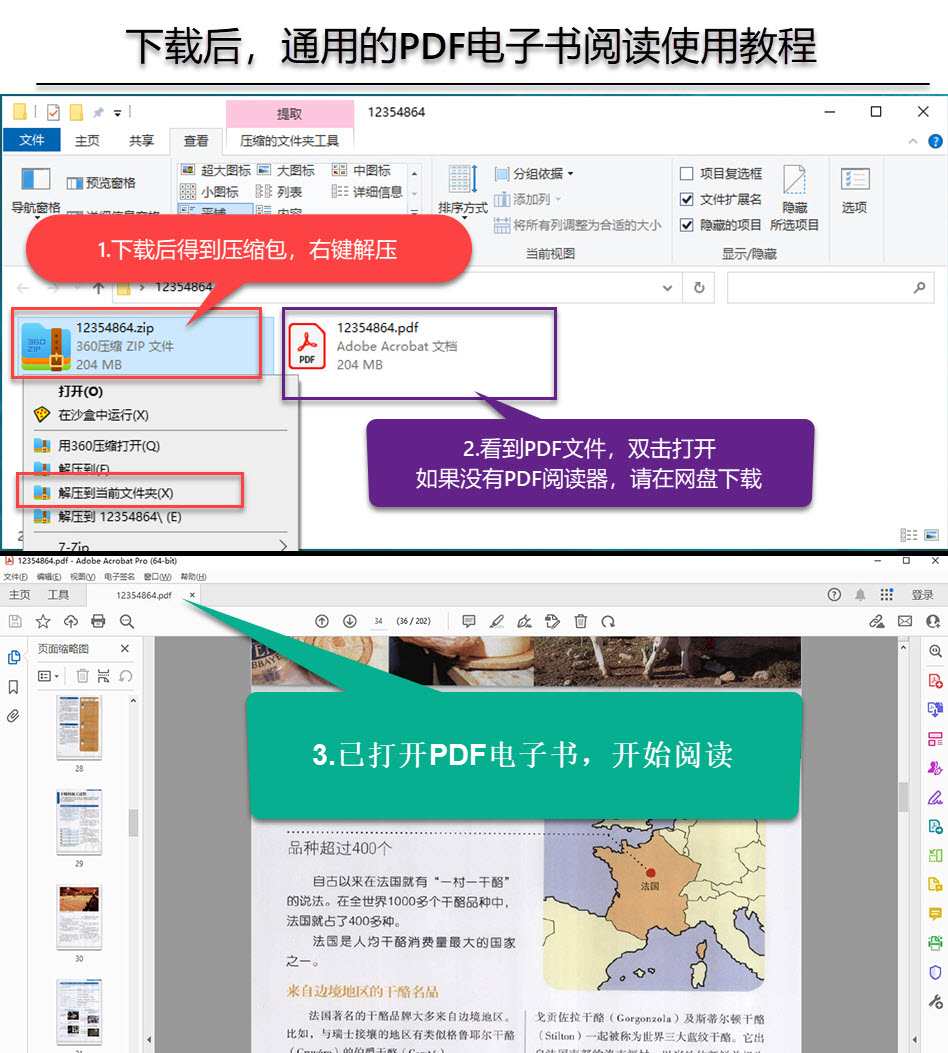Java大学教程-(第九版)-(英文版)
本书特色
[
本书是关于Java语言编程的优秀教材之一,秉承Deitel系列丛书的一贯特点:内容丰富、覆盖面广,提供详细代码与实例研究,总结出大量的面向对象编程技巧和经验。本书详细说明了在Java中面向对象编程的基本理论及实用知识,由初学者为起点,由点到面、由浅入深、循序渐进地介绍了事件处理、对象、接口、内置类、继承、多态性、数据结构和集合、查找与排序、流文件、applet、图形用户界面及多线程等,并且详细介绍了网络应用的开发与实践。第九版在前一版的基础上增加了更多的实际案例,更新了很多内容,有助于读者学习和借鉴。本书包括更广泛的教学特性,其中列举了数百个可实际使用的程序实例,并给出实际的运行结果,可以使学生在学习时更为直观。
]
内容简介
[
学习Java语言的经典教材之一:
*提供了很多的基础的、覆盖面很广的实例。
*丰富的教辅资源,源代码可直接使用。
*网络应用的开发与实践。
*内容全面,适合不同层次的读者需求。
]
作者简介
[
Paul Deitel和Harvey Deitel是全球畅销的编程语言教材和专业图书作家,“How to Program”系列是其最负盛名的一套计算机编程教材,已经销售近40年,并被翻译成中文在内的十几种语言。他们成立的Deitel & Associates公司是一家国际知名的企业培训和写作公司, 专门进行计算机编程语言、对象技术、移动应用开发及Internet和Web软件技术方面的培训和写作,出版了一流的编程专业的大学教材、
专业图书以及LiveLessons视频课程。
]
目录
ContentsChapter 1 Introduction to Computers and Java 11.1 Introduction 21.2 Computers: Hardware and Software 41.3 Data Hierarchy 51.4 Computer Organization 61.5 Machine Languages, Assembly Languages and High-Level Languages 71.6 Introduction to Object Technology 81.7 Operating Systems 101.8 Programming Languages 121.9 Java and a Typical Java Development Environment 141.10 Test-Driving a Java Application 171.11 Web 2.0: Going Social 211.12 Software Technologies 231.13 Keeping Up-to-Date with Information Technologies 241.14 Wrap-Up 24Chapter 2 Introduction to Java Applications 292.1 Introduction 292.2 Your First Program in Java: Printing a Line of Text 302.3 Modifying Your First Java Program 352.4 Displaying Text with printf 362.5 Another Application: Adding Integers 372.6 Memory Concepts 412.7 Arithmetic 422.8 Decision Making: Equality and Relational Operators 452.9 Wrap-Up 48Chapter 3 Introduction to Classes, Objects, Methods and Strings 583.1 Introduction 583.2 Declaring a Class with a Method and Instantiating an Object of a Class 593.3 Declaring a Method with a Parameter 623.4 Instance Variables, set Methods and get Methods 643.5 Primitive Types vs. Reference Types 683.6 Initializing Objects with Constructors 693.7 Floating-Point Numbers and Type double 713.8 (Optional) GUI and Graphics Case Study: Using Dialog Boxes 753.9 Wrap-Up 77Chapter 4 Control Statements: Part 1 844.1 Introduction 854.2 Algorithms 854.3 Pseudocode 854.4 Control Structures 864.5 if Single-Selection Statement 884.6 if…else Double-Selection Statement 894.7 while Repetition Statement 924.8 Formulating Algorithms: Counter-Controlled Repetition 934.9 Formulating Algorithms: Sentinel-Controlled Repetition 974.10 Formulating Algorithms: Nested Control Statements 1034.11 Compound Assignment Operators 1074.12 Increment and Decrement Operators 1074.13 Primitive Types 1104.14 (Optional) GUI and Graphics Case Study: Creating Simple Drawings 1104.15 Wrap-Up 113Chapter 5 Control Statements: Part 2 1265.1 Introduction 1265.2 Essentials of Counter-Controlled Repetition 1275.3 for Repetition Statement 1285.4 Examples Using the for Statement 1315.5 do…while Repetition Statement 1355.6 switch Multiple-Selection Statement 1365.7 break and continue Statements 1425.8 Logical Operators 1445.9 Structured Programming Summary 1485.10 (Optional) GUI and Graphics Case Study: Drawing Rectangles and Ovals 1525.11 Wrap-Up 154Chapter 6 Methods: A Deeper Look 1646.1 Introduction 1656.2 Program Modules in Java 1656.3 static Methods, static Fields and Class Math 1666.4 Declaring Methods with Multiple Parameters 1686.5 Notes on Declaring and Using Methods 1716.6 Method-Call Stack and Activation Records 1726.7 Argument Promotion and Casting 1726.8 Java API Packages 1736.9 Case Study: Random-Number Generation 1756.10 Case Study: A Game of Chance; Introducing Enumerations 1796.11 Scope of Declarations 1826.12 Method Overloading 1846.13 (Optional) GUI and Graphics Case Study: Colors and Filled Shapes 1866.14 Wrap-Up 188Chapter 7 Arrays and ArrayLists 2017.1 Introduction 2027.2 Arrays 2027.3 Declaring and Creating Arrays 2037.4 Examples Using Arrays 2047.5 Case Study: Card Shuffling and Dealing Simulation 2127.6 Enhanced for Statement 2157.7 Passing Arrays to Methods 2167.8 Case Study: Class GradeBook Using an Array to Store Grades 2197.9 Multidimensional Arrays 2237.10 Case Study: Class GradeBook Using a Two-Dimensional Array 2267.11 Variable-Length Argument Lists 2307.12 Using Command-Line Arguments 2327.13 Class Arrays 2337.14 Introduction to Collections and Class ArrayList 2357.15 (Optional) GUI and Graphics Case Study: Drawing Arcs 2377.16 Wrap-Up 240Chapter 8 Classes and Objects: A Deeper Look 2598.1 Introduction 2608.2 Time Class Case Study 2608.3 Controlling Access to Members 2638.4 Referring to the Current Object’s Members with the this Reference 2648.5 Time Class Case Study: Overloaded Constructors 2668.6 Default and No-Argument Constructors 2708.7 Notes on Set and Get Methods 2718.8 Composition 2728.9 Enumerations 2748.10 Garbage Collection and Method finalize 2768.11 static Class Members 2778.12 static Import 2808.13 final Instance Variables 2818.14 Time Class Case Study: Creating Packages 2828.15 Package Access 2868.16 (Optional) GUI and Graphics Case Study: Using Objects with Graphics 2878.17 Wrap-Up 290Chapter 9 Object-Oriented Programming: Inheritance 2989.1 Introduction 2989.2 Superclasses and Subclasses 2999.3 protected Members 3019.4 Relationship between Superclasses and Subclasses 3029.5 Constructors in Subclasses 3189.6 Software Engineering with Inheritance 3199.7 Class Object 3209.8 (Optional) GUI and Graphics Case Study: Displaying Text and Images Using Labels 3209.9 Wrap-Up 322Chapter 10 Object-Oriented Programming: Polymorphism 32610.1 Introduction 32710.2 Polymorphism Examples 32810.3 Demonstrating Polymorphic Behavior 32910.4 Abstract Classes and Methods 33110.5 Case Study: Payroll System Using Polymorphism 33310.6 final Methods and Classes 34610.7 Case Study: Creating and Using Interfaces 34610.8 (Optional) GUI and Graphics Case Study: Drawing with Polymorphism 35610.9 Wrap-Up 357Chapter 11 Exception Handling: A Deeper Look 36211.1 Introduction 36311.2 Example: Divide by Zero without Exception Handling 36311.3 Example: Handling ArithmeticExceptions and InputMismatchExceptions 36511.4 When to Use Exception Handling 36911.5 Java Exception Hierarchy 36911.6 finally Block 37211.7 Stack Unwinding and Obtaining Information from an Exception Object 37511.8 Chained Exceptions 37811.9 Declaring New Exception Types 37911.10 Preconditions and Postconditions 38011.11 Assertions 38111.12 (New in Java SE 7) Multi-catch: Handling Multiple Exceptions in One catch 38211.13 (New in Java SE 7) try-with-Resources: Automatic Resource Deallocation 38211.14 Wrap-Up 383Chapter 12 ATM Case Study, Part 1: Object-Oriented Design with the UML 38812.1 Case Study Introduction 38812.2 Examining the Requirements Document 38912.3 Identifying the Classes in a Requirements Document 39512.4 Identifying Class Attributes 40012.5 Identifying Objects’ States and Activities 40412.6 Identifying Class Operations 40712.7 Indicating Collaboration Among Objects 41212.8 Wrap-Up 418Chapter 13 ATM Case Study Part 2: Implementing an Object-Oriented Design 42113.1 Introduction 42213.2 Starting to Program the Classes of the ATM System 42213.3 Incorporating Inheritance and Polymorphism into the ATM System 42513.4 ATM Case Study Implementation 43113.5 Wrap-Up 449Chapter 14 GUI Components: Part 1 45114.1 Introduction 45214.2 Java’s New Nimbus Look-and-Feel 45314.3 Simple GUI-Based Input/Output with JOptionPane 45414.4 Overview of Swing Components 45614.5 Displaying Text and Images in a Window 45714.6 Text Fields and an Introduction to Event Handling with Nested Classes 46114.7 Common GUI Event Types and Listener Interfaces 46614.8 How Event Handling Works 46714.9 JButton 46814.10 Buttons That Maintain State 47114.11 JComboBox; Using an Anonymous Inner Class for Event Handling 47614.12 JList 47914.13 Multiple-Selection Lists 48014.14 Mouse Event Handling 4821
封面

书名:Java大学教程-(第九版)-(英文版)
作者:保罗.戴特尔
页数:1152
定价:¥168.0
出版社:电子工业出版社
出版日期:2017-06-01
ISBN:9787121317606
PDF电子书大小:65MB 高清扫描完整版
本文标题:《Java大学教程-(第九版)-(英文版)》PDF下载
资源仅供学习参考,禁止用于商业用途,请在下载后24小时内删除!

